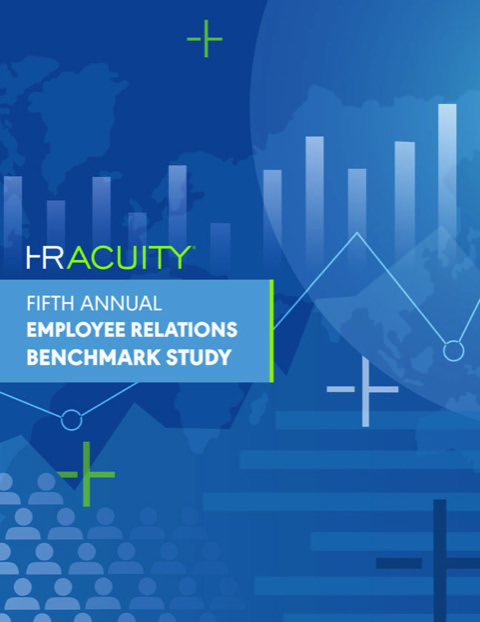As I anticipated the release of our Fifth Annual Employee Relations Benchmark Study, I was reflecting on the transformation of employee relations (ER) over the past ten years. The scope of the function now encompasses so much more than it once did, and it’s become a strategic advantage for organizations in driving business decisions and ensuring positive employee experiences. Efforts to improve employee relations processes and practices during this time, set companies up for success so they were able to adapt quickly to help employees navigate this past year of unprecedented challenges. But I was curious to see what the findings, based on data gathered throughout 2020, would uncover and wondered what the ripple effect of the pandemic, the economy, social and racial justice events and the political environment would be on employee relations.
I was encouraged to see, in the midst of it all, that a number of prior trends held firm. Using a centralized model to manage ER, incorporating technology to manage and track employee issues and investigations, the expanding scope of responsibilities, the increased use of data analytics and reporting to senior leadership remained standard practices.
However, as you might expect, it’s not all good news. The data exposed troubling shifts in processes that could have far-reaching consequences if we don’t right the ship. These findings signal the need for a renewed commitment to get these processes back on track. Leaders must build on prior progress to ensure that employee relations continues to support business growth and drive positive change in the workplace.
Let’s dive deeper into some of the key findings from this year’s report. You can download the full report, for a more in-depth look at the results.
Technology offers better data and operational benefits
90% of organizations are now tracking a wide range of employee relations statistics. With continually increasing emphasis on data and analytics, it’s not surprising that incorporating technology that supports employee relations is on the rise. Seventy-five percent of organizations use some type of technology to manage employee relations and nearly half use solutions specifically designed to address the nuances of documenting and tracking employee issues and investigations. Those using employee relations technology report operational efficiencies, improved effectiveness and the ability to gather more meaningful employee-related data. As C-Suite leaders increasingly recognize the value of the data, 86% of employee relations teams are handling ER analytics and more than two-thirds report metrics to senior leaders.
Analytics remain underutilized
The study also shows that employee metrics are being used in new ways such as identifying at risk populations and to determine training and staffing needs. But despite growing interest in advanced analytics, employee metrics are not being consistently combined with metrics from other functional areas to provide deeper insights. For example, only 19% of organizations are reporting employee relations metrics to diversity and inclusion leaders to help examine and uncover systemic issues, root out bias and measure the success of DE&I initiatives. Yet, organizations everywhere have vowed to create more inclusive workplaces. How can you address systemic issues and determine whether efforts in these areas are effective without examining employee-related data? Organizations need to use cross-functional analytics to explore the stories the data tells and modify plans and programs based on these stories.
Essential processes need attention
As employee relations teams shifted gears and worked tirelessly to respond to employee needs and help their organizations adjust in 2020, three critical employee relations process areas suffered from significant decreases – investigation processes, transparency and staffing resources. Over the past four years, the use of required processes for conducting investigations to ensure thorough and fair outcomes has steadily risen. But this year’s 15-point drop in this practice raises concerns. The quality of investigations is at further risk as investigators are also being trained less frequently.
Transparency – the practice of publishing aggregated, anonymous investigation information to drive accountability and build transparent culture – grew in the aftermath of the #MeToo movement as organizations looked to drive accountability and build transparent cultures. The trend line spiked in 2019, surpassing predicted levels and an additional 48% of organizations planned to adopt this practice. Yet, in 2020 only 16% of organizations shared these metrics with employees. Additionally, employee relations staffing resources dropped across the board in 2020, more than predicted in last year’s study and are expected to remain flat this year. This matters as employee relations professionals are already stretched thin. Many ER teams are managing return to office issues, providing diversity, equity and inclusion guidance and 71% of ER teams are now responsible for policy oversight. Coupled with continually heavy caseloads, the downturns in these critical processes call us to revamp employee relations strategies to regain the momentum created by previous advances. Renewed commitment to these vital processes will go a long way to build trust with employees and let them know that their issues will be addressed in a consistent, thorough and timely manner.
These are just a few of the insights from this year’s Benchmark Study that resonated with me. I hope you will apply the research findings to your ER strategy to help you streamline operations and strengthen your employee relations – which is truly the bedrock of a fair and productive workplace.
And to all of the employee relations leaders who found time to participate in the study – thank you! I appreciate your expertise and value your partnership in providing this research that so many organizations find valuable. I am grateful for our ever-growing employee relations community and remain committed to helping you on your journey to continue to elevate and improve the employee experience.




